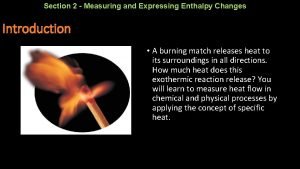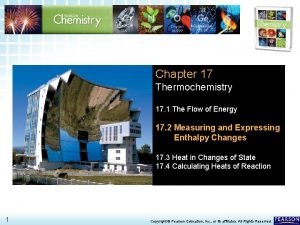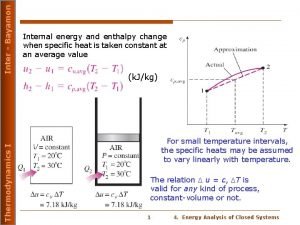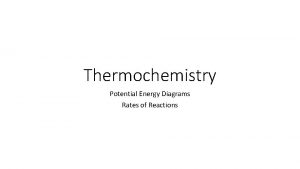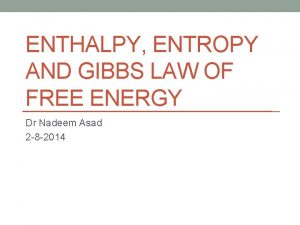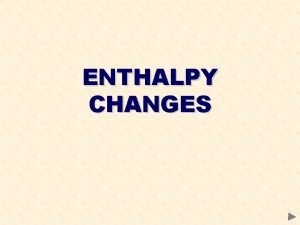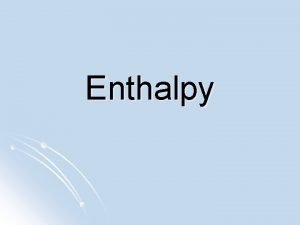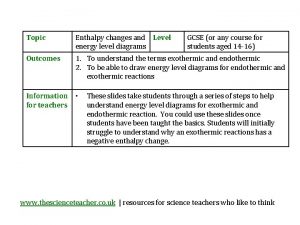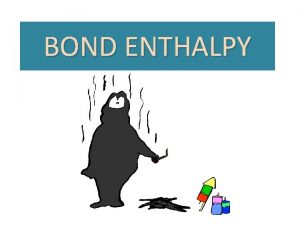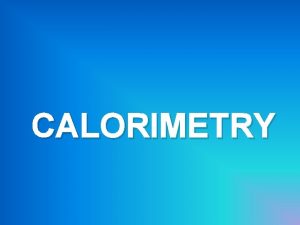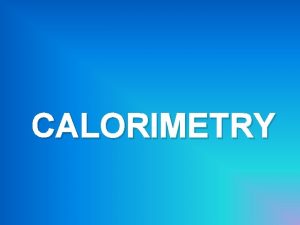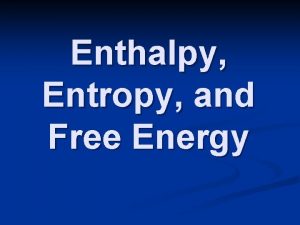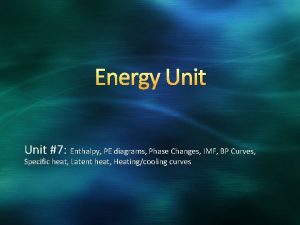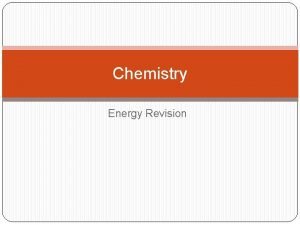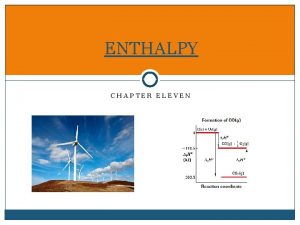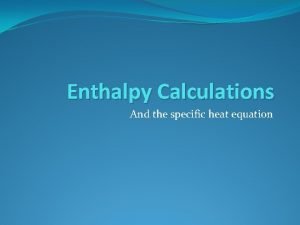Topic Enthalpy changes and Level energy level diagrams














- Slides: 14

Topic Enthalpy changes and Level energy level diagrams Outcomes 1. To understand the terms exothermic and endothermic 2. To be able to draw energy level diagrams for endothermic and exothermic reactions Information • for teachers GCSE (or any course for students aged 14 -16) These slides take students through a series of steps to help understand energy level diagrams for exothermic and endothermic reaction. You could use these slides once students have been taught the basics. Students will initially struggle to understand why an exothermic reactions has a negative enthalpy change. www. thescienceteacher. co. uk | resources for science teachers who like to think

The men in this picture are being kept warm by the fire. We can use a diagram to show what energy changes are taking place when the wood burns.

Energy (J) Questions Where are the products on this energy level diagram? ΔH = positive or negative? ΔT(surroundings) = positive or negative? reactants (fuel + oxygen) Progress of reaction

Temperature of surroundings would increase. Energy (J) reactants (fuel + oxygen) ΔH = negative products (carbon dioxide + water) Progress of reaction

Questions Energy (J) ΔH = positive or negative? ΔT(surroundings) = positive or negative? Reactants Products Progress of reaction

Questions ΔH = positive or negative? ΔT(surroundings) = positive or negative? Energy (J) Products Reactants Progress of reaction

Questions Energy (J) ΔH = positive or negative? ΔT(surroundings) = positive or negative? Reactants Products Progress of reaction

Questions ΔH = positive or negative? ΔT(surroundings) = positive or negative? Energy (J) Products Reactants Progress of reaction

Before the reaction could begin, the man had to light the fire with a match. Can you show this on your energy level diagram? We call the minimum energy needed to start a reaction the activation energy or Ea.

Ea Energy (J) Reactants (fuel + oxygen) ΔH Products (carbon dioxide + water) Progress of reaction

Which colour line represents the enthalpy change? Energy (J) Which colour line represents the activation energy? Progress of reaction

Which colour line represents the enthalpy change? Energy (J) Which colour line represents the activation energy? Ea Progress of reaction

Sketch your own energy level diagrams 1. A reaction with a small activation energy where ΔH is negative 2. An enothermic reaction with a large activation energy 3. The reaction between Mg and O 2 4. The combustion of petrol 5. The reaction inside an ice pack 6. Melting snow

Think deep! If a match is required to start a fire, why doesn’t the fire go out when the match finishes burning? Ea Energy (J) reactants (fuel + oxygen) ΔH products (carbon dioxide + water) Progress of reaction
 Measuring and expressing enthalpy changes
Measuring and expressing enthalpy changes Lesson 2: measuring and expressing enthalpy changes
Lesson 2: measuring and expressing enthalpy changes Enthalpy
Enthalpy Enthalpy change of combustion definition a level
Enthalpy change of combustion definition a level Use case model
Use case model Activity diagrams are static diagrams
Activity diagrams are static diagrams Changes in latitudes, changes in attitudes meaning
Changes in latitudes, changes in attitudes meaning What are the chemical change
What are the chemical change Example of a clincher
Example of a clincher Narrow
Narrow Inter bayamon
Inter bayamon Energy energy transfer and general energy analysis
Energy energy transfer and general energy analysis Energy energy transfer and general energy analysis
Energy energy transfer and general energy analysis Enthalpy change in a potential energy diagram
Enthalpy change in a potential energy diagram When delta g is positive
When delta g is positive
